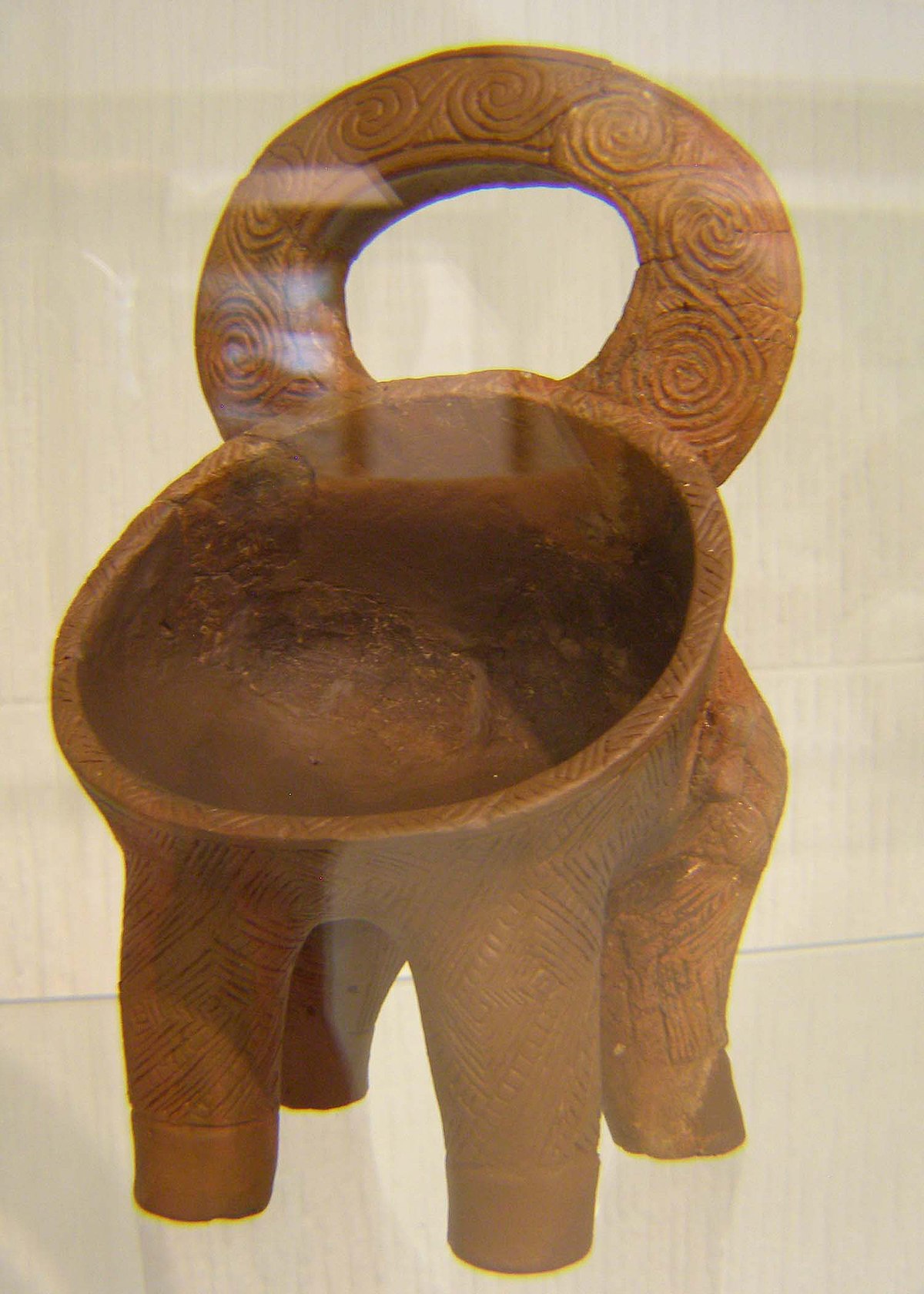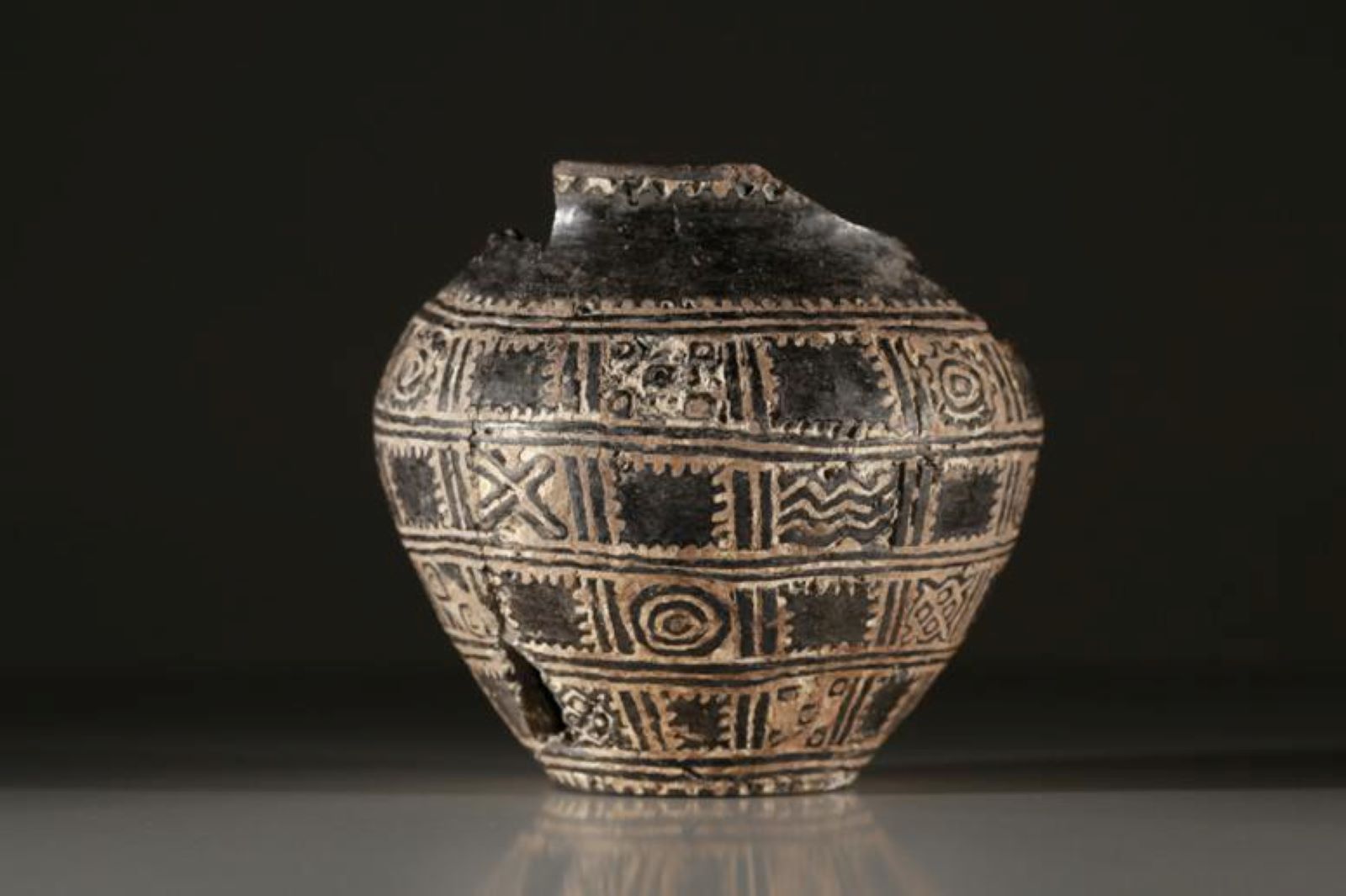POV - I. Prehistory
1/149
Earn XP
Description and Tags
1.1 The introduction to history 1.2 The evolution of human from the Paleolithic to the Metal age 1.3 Nalazišta i kulture na tlu Hrvatske 1.4 The Economic Activities and Modes of Production in Prehistory 1.5 The Inventions and Technologies in Prehistory 1.6 Early Religious Beliefs and Art in Prehistory
Name | Mastery | Learn | Test | Matching | Spaced |
|---|
No study sessions yet.
150 Terms
pr. The introduction to history
Uvod u povijest
What’s the definition of history ?
It’s a science which critically studies and explains the past of the human society
Who are historians ?
They are experts who are engaged in the studying of the past.
What are the 5 kinds of historical sources ?
objective (material), written, pictorial, sound (sonorous), verbal tradition
era
a big time period that starts with a major event after which the years are counted
when does the greek / olympic era start ?
776 BC
when does the roman era start ?
753 BC
when does the jewish era start ?
3761 BC
when does the byzantine era start ?
5509 BC
when does the muslim era / hijrah start ?
622 AD
pr. modern age
novi vijek
what are the 5 historical periods ?
prehistory, the old ages, the middle ages, the modern ages, newest period
when does prehistory start ?
from the beggining of humankind until the invention of scripture (cuneiform) in 3500 BC
when do the old ages start ?
from the invention of scripture in 3500 BC until the fall of the western roman empire in 476 AD
when do the middle ages start ?
from the fall of the western roman empire in 476 AD until the discovery of america in 1492 AD
when do the modern ages start ?
from the discovery of america in 1492 until the end of WW1 in 1918
when does the newest period start ?
from the end of the WW1 in 1918 until now
what are the first historians called ?
logographers
what was the logographers’ job ?
their job was to record all available data on the past events, not looking into the reliability of the sources
who was the first known logoraph ?
hecataeus from miletus
who’s the father of history and what book did he write ?
herodotus (herodot) from halicarnassus, The Histories
why is herodotus considered the father of history ?
because he was the first one to check the reliability of his sources
what was written in The Histories book ?
the description of the people on the eastern mediterranean
where is thucydides from and why is he important ?
he’s from athens and is important because he was the first one to distinguish the difference between the immediate cause and underlying causes
what did thucydides write ?
History of the Peloponnesian War
pr. immediate cause
povod
pr. underlying causes
uzroci
who continued the greek historiographical tradition ?
roman historians
who are the most important roman historians ?
cicero, titus livius / livy, tacitus
who was the greatest roman historian and what’s his quote ?
tacitus, sine ira et studio (bez ljutnje i pristranosti)
what’s cicero’s quote ?
historia est magistra vitae
what’s livy’s quote ?
ab urbe condita
pr. monument
spomenik

što slika prikazuje, za što se predmet koristio te kojoj kulturi pripada ?
riton, ne zna se za što se koristio, pripada danilo kulturi

?
slika prikazuje vučedolski orion (pripada vučedolskoj kulturi). to je najstariji europski prikaz kalendara (iz eneolitika je) te je pronađen potkraj 20. stoljeća u vinkovcima. ima četiri paralelne vodoravne trake te svaka predstavlja jedno godišnje doba - gore je proljeće, a dolje zima. trake su podijeljene na 12 polja tj. tjedana ili 3 mjeseca. godina im je trajala 360 dana, mjesec 30, godišnje doba 90 dana, a na dijelu posude koji je otkrhnut se pretpostavlja da je bilo napisano kako objašnjavaju nedostatak dana u godini. zove se orion zbog zviježđa koje se u vrijeme njihove nove godine pojavljuje na nebu - orion.
gdje se nalaze slike crteža u špiljama ?
lascaux i altamira
vučedolska golubica ?
za vučedolsku golubicu se pretpostavlja da je kultna posuda jer je šuplja i ima rupu na glavi. povezuju je s kultom sunca te kultu umijeća kovačkog zanata (u slučaju da je jarebica) jer su kovači često prikazani kao hromi u mitovima, a jarebice se prave da su hrome pred neprijateljima kako bi preživjele
how are the 3 broad periods of the stone age called ?
old stone age / paleolithic, middle stone age / mesolithic, new stone age / neolithic
when did the paleolithic start and end ?
3.5 million BC - 10 000 BC
when did the mesolithic start and end ?
10 000 BC- 6 500 BC
when did the neolithic start and end ?
6 500 BC - 3 500 BC
into what are hominids subdivided ?
hominins and pongids
what’s the oldest hominin ?
australopithecus
what are the oldest australopithecus remains called and where were they found ?
lucy, hadar (ethiopia)
what’s pleistocene ?
a period of repeated glaciations
what happened during pleistocene ?
homo habilis developed
what’s homo habilis also called and why ?
handy man because he was the first one to use tools
what’s the difference between homo erectus and australopithecus ?
homo erectus could stand with legs unlike the australopithecus
when did the neanderthals start appearing ?
250 000 years ago
after what did the neanderthals get their name ?
after a valley near dusseldorf in germany
when did homo sapiens appear ?
100 000 BC
when did the homo sapiens appear in europe and what’s it called ?
35 000 years ago, cro-magnon (named after a cave in france)
what did the cro-magnons invent ?
harpoon, needle, spear, knife
what started with the agricultural revolution ?
sowing of wheat
pr. alloy
legura, slitina
pr. glaciation
zaleđivanje
pr. amalgamate
spojiti, miješati
pr. melting-plants
talionice
pr. casting
lijevanje metala
pr. metal working
obrada metala
pr. copper
bakar
pr. proto humans
praljudi
into what periods is the metal age divided ?
eneolithic (the copper age), the bronze age, the iron age
why is the eneolithic called that ?
because stone was still used, even though copper was discovered
when did the eneolithic start and end ?
3500 BC - 2200 BC
when did the bronze age start and end ?
2200 BC - 1200 BC
when did the iron age start and end ?
1200 BC onwards
how did people discover bronze ?
they discovered tin which they amalgamated with copper to make an alloy (bronze)
what happened during iron age ?
melting plants were established all over asia minor
who were the celts ?
they were the most important nation of the european iron age because they developed metal working (casting) and pottery. they also dominated europe because of their military expansion .
koje su najstarija nalazišta u hrvatskoj (paleolitik) ?
šandalja 1., veternica, vindija, hušnjakovo brdo
gdje se nalazi šandalja 1. i zašto je važna ?
nalazi se u puli te je tamo pronađen kameni oblutak koji je najstarije udaračko oruđe
gdje se nalazi veternica i zašto je važna te tko ju je istraživao ?
nalazi se na medvednici i važna je jer su tamo pronađeni ostaci neandertalaca i kameno oruđe te se uz nju povezuje kult spiljskog medvjeda. istraživali su ju mirko malez i dragutin gorjanović kramberger.
gdje se nalazi vindija i zašto je važna ?
nalazi se kod varaždina te je važna jer su tamo pronađeni ostaci neandertalaca te kameni i koštani artefakti
gdje se nalazi hušnjakovo brdo, što je pronađeno tamo i tko ga je i kad otkrio ?
nalazi se kod krapine, to najveće nalazište ostataka neandertalaca u hrvatskoj (od 130 000 god. pr. Kr.) te su pronađeni ostaci kostiju životinja i ljudi, strugala te kresanog kamena. otkrio ga je dragutin gorjanović kramberger 1899. godine.
koje se kulture u hrvatskoj spominju u neolitiku ?
starčevačka, sopotska, danilo, hvarska
gdje se nalaze (hrvatske) kulture iz neolitika ?
starčevačka - srijem, slavonija
sopotska - slavonija
danilo - danilo (šibenik), smilčić (zadar)
hvarska - hvar
koji su prvi poznati narodi na tlu hrvatske ?
kelti i iliri
gdje su se kelti nalazili (u hrvatskoj) i koji se još narodi spominju za njih?
u sj. hrvatskoj, skordisci i taurisci
gdje su se nalazili iliri i koji im još narodi pripadaju ?
u istri i dalmaciji, histri, japodi, liburni i delmati
što je tumul ?
grobni humak
što je gradina (i pr.) ?
kamena utvrda na uzvisini, grad motovun
kojem razdoblju pripadaju kelti i iliri ?
eneolitiku
koja kultura je važna za brončano doba u hrvatskoj ?
vinkovačka kultura
koja kultura je važna za kasno brončano doba u hrvatskoj i gdje se pojavljuje ?
kultura žarnih polja, u zagrebu, velikoj gorici i virovitici
why were people in paleolithic living the nomadic life ?
because of climate change and continuous search for food
how many people did live together in paleolithic ?
15- 20
what was the average lifetime in paleolithic ?
30 - 40 years
what did the neanderthals hunt ?
large animals such as buffalo and deer because they could use their remains for a lot of different things
what happened in mesolithic when it comes to climate changes ?
the ice began to melt due to the warmer climate and the water level increased (¨̧̧̧+ 100 m on the adriatic sea)
what were the cro-magnons doing during mesolithic ?
they were fishing and knew how to use harpoon, needle, spear and knife. they also cultivated cereals - barley and wheat as well as domesticated some animals- sheep, goats, pigs, cattle
what were the oldest towns ?
jericho (palestine, 8000 BC) and catal huyuk (turkey, 7000 BC)
what’s the oldest village ?
qalat-jarmo (mesopotamia/iraq)
koja su obilježja gradova ?
zidine, trgovine, proizvodnja
explain what happened with humans and their way of living in neolithic ?
they transformed from hunters and gatherers into cattle-breeders and agriculturists (farmers). they settled into permanent villages and towns.
what did the discovery od metals result in ?
an increasing number of permanent settlements
what professions emerged in the metal age ?
miners, merchants, artisans
what cultures are important for the metal age ?
the hallstatt culture (older iron age) and the la tene culture (younger iron age)
what was the hallstatt culture named after ?
it was named after hallstatt in austria - the oldest iron age site in europe
was was the la tene culture named after ?
it was named after an archeological site in switzerland that was associated with the celts